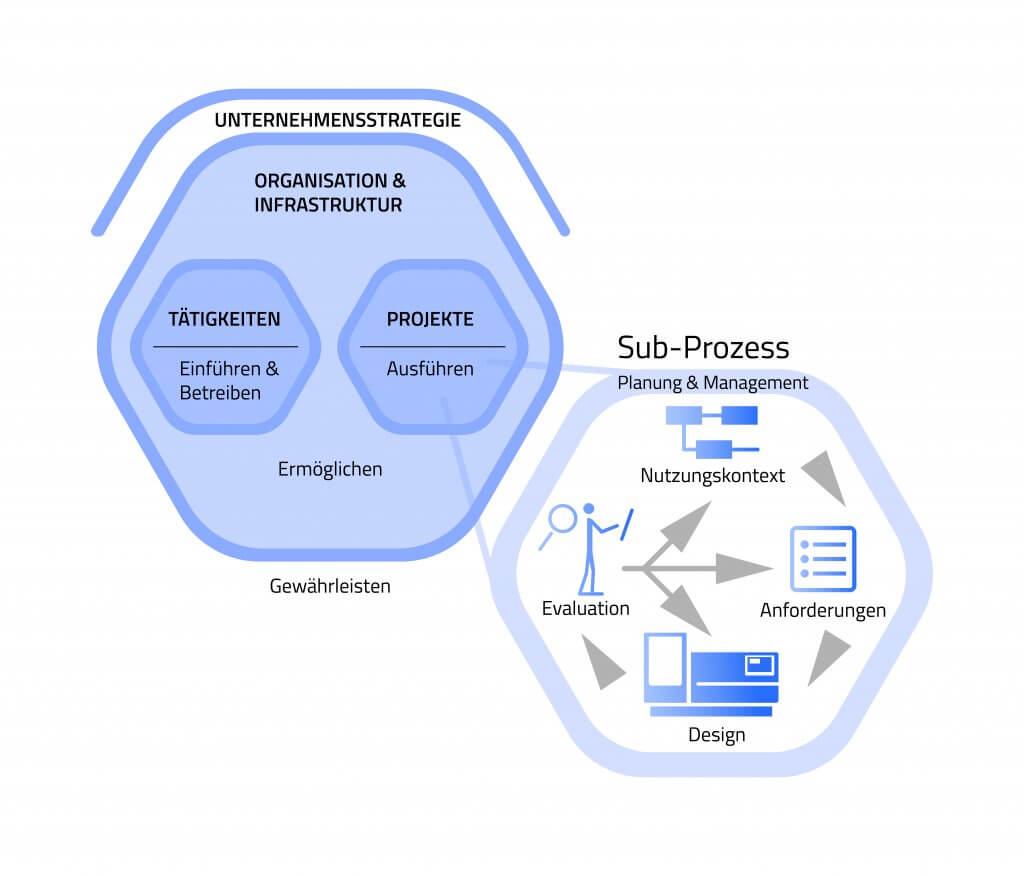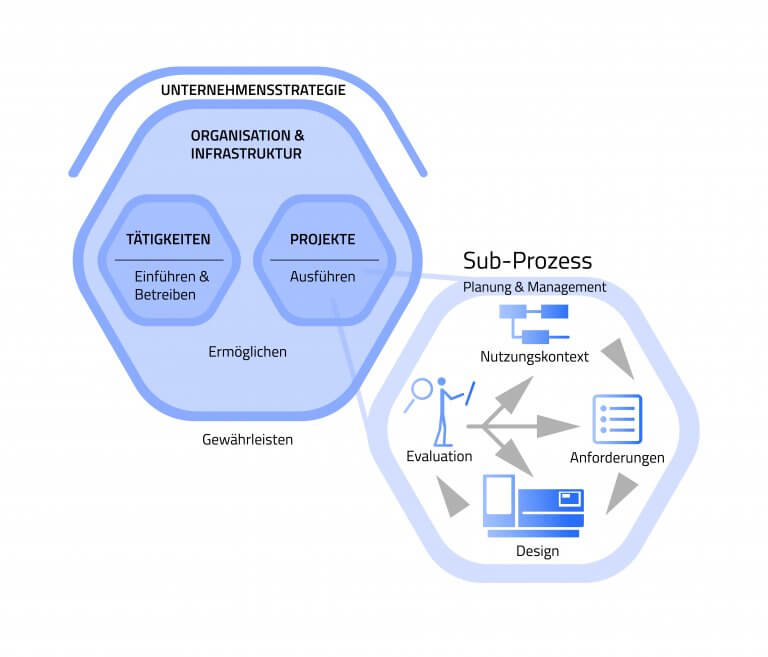The term “user-centered design” traditionally refers to the development of interactive systems, such as physical products like machine tools or digital services like cloud-based management dashboards, with a focus on the actual user. In the endeavor to further optimize these interactive systems, the human-centered approach has long been of relevance not only in selected phases of development.
Looking at the guiding principles of global players, one can recognize the penetration of the HCD approach (Human-Centered Design) down to the lowest levels.
This not only brings advantages for the later users in our modern work world through a positive user experience and effective, efficient, and satisfying interaction with these systems. The more deeply the “human-centered” approach is embedded in companies (so-called HCD maturity), the more stakeholders are influenced by it. Thus, it would be wrong to consider such a level of maturity merely as an effort. Instead, it represents a source of sustainable and socially responsible innovative strength. This can be used to create superior products and services as well as a more desirable work environment.
TIP:
„HCD affects industries such as medical technology, not only impacting the professionals who often represent the primary users. Developers and product owners feel that their individual strengths and personality are valued and utilized, and that they can engage in responsible and meaningful work. Patients feel secure and acknowledged through this focus on health, safety, and well-being in dealing with human-centered interactive systems.“
But where should one start? In the daily work jungle, such approaches may seem more ideological in nature, or aren’t they?
Often, it helps to first gain clarity about the associated activities through a clear and holistic structure to be able to tackle the first steps purposefully. The ISO 9241-220 provides the corresponding framework in the form of the holistically oriented HCD process model. In this model, HCD activities of various process categories (levels) are structured in the context of internal company processes and hierarchies. These range from everyday, operational work in and around projects to organizational and structural processes up to the overarching corporate strategy. Within these categories, numerous sub-processes can be carried out to improve the overall HCD maturity level. While at the highest level, guiding principles and corporate policies need to be aligned with human-centered design to sustainably increase the HCD maturity level, only the individual necessary actions in the daily development routine of experts in their respective fields lead to an initiative (introduction of HCD processes) and constant (operation of HCD processes) advancement of the HCD processes.

Central to this is the human-centered quality, which can extend across all areas, from specific product interface quality to the work quality of development teams. Potential HCD processes must first be identified, which are possible at all levels of the HCD process model.
TIP:
„HCD processes must first be planned and managed and brought into the right usage context. Subsequently, the requirements are specified, which are to be shaped through human-centered design. These must then be evaluated by the decisive and representative users using appropriate metrics within the respective HCD process.“
To iteratively improve these in the respective areas, it is therefore essential for all participants to understand and comprehend the following aspects: the purpose of an HCD process, such as tapping into new customer segments through information about new usage contexts and user needs – the associated benefits, such as claiming more market shares through knowledge of the necessary usage requirements and relevant acceptance criteria and the ability to effectively utilize them in development – the translation into outcomes, such as faster and more comfortable operation in the respective work task, which can lead to the consolidation of an innovative and forward-looking company image – through human-centered activities, such as continuous usage context analysis in the respective product development process, which is to be carried out sustainably and socially responsibly.
Responsible handling of such HCD processes always involves a constant assessment of the associated potential opportunities as well as expenditures and risks in the context of developing interactive systems. Achieving a “human-centered design” maturity level thus represents not a sprint, but a marathon, in which, however, every step in the right direction pays off.
Contributions in this topic field
Standards & References
- DIN EN ISO 9241-210:2020-03: Ergonomie der Mensch-System-Interaktion – Teil 210: Menschzentrierte Gestaltung interaktiver Systeme (ISO 9241-210:2019); Deutsche Fassung EN ISO 9241-210:2019
- ISO 9241-220:2019-03: Ergonomie der Mensch-System-Interaktion – Teil 220: Prozesse zur Ermöglichung, Durchführung und Bewertung menschzentrierter Gestaltung für interaktive Systeme in Hersteller- und Betreiberorganisationen
- ISO 27500:2016: The human-centred organization — Rationale and general principles

